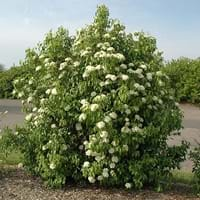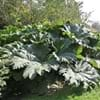Life Span
Perennial
Perennial
Origin
Hybrid origin
Northeastern United States, Mid-Atlantic United States, Southeastern United States, North-Central United States, Central United States, Canada
Types
Victoria Rhubarb
Colorado Red Rhubarb
Turkish Rhubarb
Arrowwood Viburnum, American Cranberrybush, European Cranberrybush
Number of Varieties
Not Available
Habitat
gardens, Grassland, Humid climates, Tropical regions, Urban areas
Rocky areas, Stream side, Woodlands
USDA Hardiness Zone
5-8
2-8
Sunset Zone
2b, 3a, 3b, 4, 5, 6, 7, 14, 15, 16, 17
1a, 1b, 2a, 2b, 3a, 3b, 4, 5, 6, 7, 8, 9, 14, 15, 16, 17, 18, 19, 20, 21
Habit
Clump-Forming
Oval or Rounded
Flower Color
Light Pink
White
Flower Color Modifier
Not Available
Bicolor
Fruit Color
Burgundy
Green, Light Yellow, Pink, Blue Violet, Black
Leaf Color in Spring
Green, Dark Red
Green
Leaf Color in Summer
Green, Dark Red
Green
Leaf Color in Fall
Green, Dark Red
Red, Purple
Leaf Color in Winter
Light Green
Not Available
Leaf Shape
Compound
Ovate
Plant Season
Spring, Summer, Fall
Spring, Summer, Fall
Sunlight
Full Sun, Partial Sun
Partial Sun, Partial shade
Growth Rate
Medium
Not Available
Type of Soil
Clay, Loam
Clay, Loam, Sand
The pH of Soil
Acidic, Neutral, Alkaline
Acidic, Neutral, Alkaline
Soil Drainage
Average
Average
Bloom Time
Summer, Late Summer
Spring, Late Spring
Tolerances
Drought
Drought
Where to Plant?
Ground
Ground
How to Plant?
Stem Planting
Seedlings
Plant Maintenance
Medium
Medium
Watering Requirements
Do Not over Water, Requires regular watering, Use Mulches to help prevent water loss during hot and windy weather, Water Deeply
Do not water frequently
In Summer
Lots of watering
Ample Water
In Spring
Moderate
Average Water
In Winter
Average Water
Moderate
Soil pH
Acidic, Neutral, Alkaline
Acidic, Neutral, Alkaline
Soil Type
Clay, Loam
Clay, Loam, Sand
Soil Drainage Capacity
Average
Average
Sun Exposure
Full Sun, Partial Sun
Partial Sun, Partial shade
Pruning
Remove damaged leaves, Remove dead branches, Remove dead leaves
Cut limbs, Remove damaged leaves, Remove dead branches
Fertilizers
All-Purpose Liquid Fertilizer
as it is a flowering plant, use high phosphorous content fertilizer
Pests and Diseases
Red blotch
Downy mildew, fungus, Powdery mildew, Red blotch, Rust
Plant Tolerance
Drought
Drought
Flower Petal Number
Not Available
Not Available
Foliage Texture
Coarse
Medium
Foliage Sheen
Glossy
Matte
Attracts
Not Available
Birds, Butterflies
Allergy
Skin irritation
no allergic reactions
Aesthetic Uses
Showy Purposes
Showy Purposes
Beauty Benefits
Not Available
Not Available
Environmental Uses
Air purification
Food for birds, Wildlife, Windbreak
Medicinal Uses
Not Available
Asthma, Cramps, Diuretic, Fever, Nerve sedative, Palpitation
Part of Plant Used
Whole plant
Flowers, Fruits
Other Uses
Culinary use, Used as Ornamental plant
Used As Food, Used for its medicinal properties
Used As Indoor Plant
No
No
Used As Outdoor Plant
Yes
Yes
Garden Design
Feature Plant, Mixed Border
Feature Plant, Foundation, Fruit / Fruit Tree, Hedges, Screening / Wind Break
Botanical Name
RHEUM 'Ace of Hearts'
VIBURNUM lentago
Common Name
Ace of Hearts Ornamental Rhubarb, Ornamental Rhubarb
Nannyberry
In Hindi
सजावटी प्रकार का फल
Nannyberry
In German
Ornamental Rhabarber
Nannyberry
In French
rhubarbe ornementale
alisier
In Spanish
Ornamental de ruibarbo
Nannyberry
In Greek
καλλωπιστικά Ραβέντι
Nannyberry
In Portuguese
ornamental ruibarbo
Nannyberry
In Polish
ozdobne Rabarbar
Nannyberry
In Latin
decentius Rhubarb
Nannyberry
Phylum
Tracheophyta
Magnoliophyta
Class
Not Available
Magnoliopsida
Order
Caryophyllales
Dipsacales
Family
Polygonaceae
Caprifoliaceae
Clade
Angiosperms, Core eudicots, Eudicots
Angiosperms, Asterids, Eudicots
Tribe
Not Available
Not Available
Subfamily
Not Available
Not Available
Number of Species
Not Available
Importance of Ornamental Rhubarb and Nannyberry
Want to have the most appropriate plant for your garden? You might want to know the importance of Ornamental Rhubarb and Nannyberry. Basically, these two plants vary in many aspects. Compare Ornamental Rhubarb and Nannyberry as they differ in many characteristics such as their life, care, benefits, facts, etc. Every gardener must at least have the slightest clue about the plants he wants to plant in his garden. Compare their benefits, which differ in many ways like facts and uses. The medicinal use of Ornamental Rhubarb is Not Available whereas of Nannyberry is Asthma, Cramps, Diuretic, Fever, Nerve sedative and Palpitation. Ornamental Rhubarb has beauty benefits as follows: Not Available while Nannyberry has beauty benefits as follows: Not Available.
Compare Facts of Ornamental Rhubarb vs Nannyberry
How to choose the best garden plant for your garden depending upon its facts? Here garden plant comparison will help you to solve this query. Compare the facts of Ornamental Rhubarb vs Nannyberry and know which one to choose. As garden plants have benefits and other uses, allergy is also a major drawback of plants for some people. Allergic reactions of Ornamental Rhubarb are Skin irritation whereas of Nannyberry have no allergic reactions respectively. Having a fruit bearing plant in your garden can be a plus point of your garden. Ornamental Rhubarb has showy fruits and Nannyberry has showy fruits. Also Ornamental Rhubarb is not flowering and Nannyberry is not flowering . You can compare Ornamental Rhubarb and Nannyberry facts and facts of other plants too.





